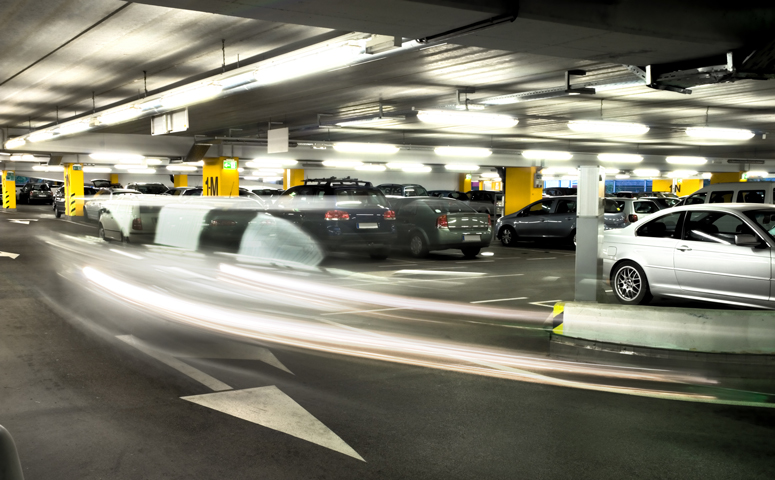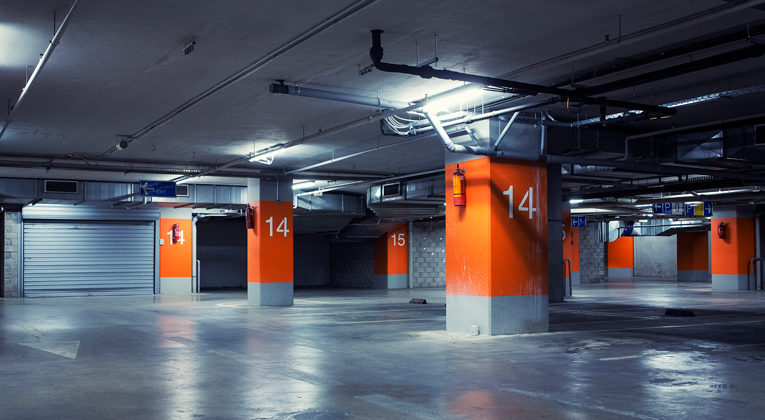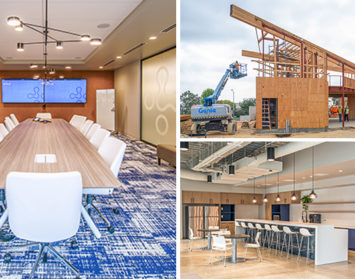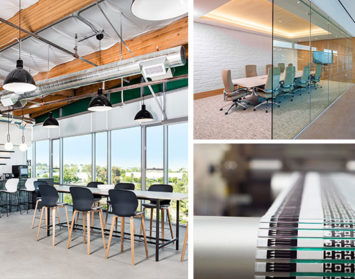In today’s market where land is scarce, parking structures are becoming a necessary and expensive element to developments and campus designs. With projects today facing more and more questions and challenges requiring expert advice and direction, we’re helping owners prioritize their decisions. Whether it’s choosing between surface parking or parking structures, creating a finished product that meets financial goals without sacrificing the entire project’s design intent can be a challenge.
Some owners consider parking a necessary evil – especially when parking structures are expensive and typically the least attractive element on a project. Budget typically drives decisions, and surface parking is the least expensive option. The problem is it eats up valuable real estate. For example, a parking structure can cost anywhere from $12,000 per stall to $40,000 per stall depending on the number of stalls, the foundation conditions, the number of levels below grade, the structure’s efficiency, facade design, accessibility, connectivity to adjacent structures or campus, and current market conditions. So where do we start?
Code Requirements
Start with the minimum requirements. The required number of stalls varies for each municipality and is typically calculated on a number of spaces per 1,000 square feet of interior occupied space basis. That’s a mouthful, but here’s a real life example. A certain municipality may require a research-and-development facility to have between 2.5 to 4.0 parking spaces per 1,000 square feet, so the owner may decide to target 3.3 spaces per 1,000 square feet. If the building has 100,000 square feet of interior occupied space, the parking structure will need 330 parking stalls.
Geography
Labor costs, municipality requirements, project timing, and material costs will differ based on project location. Specifically, where the project is located within a region will dictate which framing method is the best for construction, such as precast concrete, cast-in-place concrete, or structural steel. Although you rarely see standalone structural steel parking structures, it’s worth considering the option in preliminary discussions – on occasion subterranean parking structures are built using structural steel. Similarly, each region could have its own labor requirements, and union labor agreements may come in to play, impacting the cost of concrete versus steel.

Geotechnical Report
A geotechnical report will help to clarify what’s underground. Think about it this way: a geotechnical report is like a wizard’s crystal ball – where a crystal ball helps us to see into the future, a geotechnical report helps us to see what’s below ground. So when roughly 60 to 70 percent of a structure’s costs are spent on structural components, understanding the soils conditions helps to alleviate unforeseen costs, and clarify design requirements. Similarly, poor soils conditions could require specific foundational requirements that may significantly increase building costs.
Efficiency
Efficiency relates to the structure’s shape and square footage per parking stall. A uniform rectangular parking structure is the easiest to build and allows for efficient drive aisles, turning radii, and parking stall sizing. The straight edges are easier to construct and help maximize the number of spaces and drive aisles. This is an important topic because the size per stall can dictate the number of cars per level, the type of structure, and can impact the overall budget. Additionally, a unique shape is more difficult to build and harder to layout parking stalls in, which means the structure will be more expensive.
Number of Levels – Run the math, if you have a 27,000 square foot site that needs to park 500 cars, then:
- You can fit 90-stalls on 5.5-levels at 300 square feet per stall, or
- You can fit 77-stalls on 6.5 levels at 350 square feet per stall.
More levels results in more material, which ultimately equates to higher cost, so the goal is to always to minimize the needed square feet per stall.
Structural Framing – There are two types of structural framing, short-span and long-span. Each span-type refers to the distance between columns. Short-span typically locates one column every third parking space, as compared to the long-span where each column is located every 60-feet, with structural beams running over the stall and drive aisles. Short-span designs are typically less expensive; however, they are less efficient than long-span designs because more columns take up more space, hence more square footage per each stall.
Facade
What do you want the parking structure to look like? If maintaining a low budget is the number one goal then you should direct the design and construction team to design a bare-bones concrete structure. However, there are options to dress-up the parking structure – especially if it is at the main entrance of your campus or development. Keep in mind the architectural upgrades come with a price tag. Before you make any decisions ask the project team to give you a menu of architectural upgrades with rough estimates for each option. You never know, in the end you might be willing to pay a little extra to beautify your structure.
Project Timing and Market Conditions
If you’re planning to start construction in two years, your budget should always account for economical factors such as inflation and material cost increases. In recent years, steel prices have jumped 17 percent. You can imagine this financial data was not the type of news owners, designers, or contracting firms wanted to hear. To protect the owner and the project, include a line item in the project budget for inflation – we typically include 3 percent for each year for the project is in procurement and construction. Anticipating a drastic 17 percent increase is difficult to plan for; however, design and construction contingency should be included in the project budget early on to account for unforeseeable cost impacts such as material price increases.
If you’re thinking about building a parking structure and have a basic description of your requirement, then you are ready to seek an experienced team with a proven track record of success. From inception to completion, Hughes Marino can be a valuable partner to see any construction project through successfully.
Hughes Marino’s industry leading Program, Project and Construction Management team has unmatched expertise in every type of commercial building project from tenant improvements to ground-up build-to-suits. With decades of experience, our project managers, engineers and LEED APs offer practical insights for the construction management professional.










